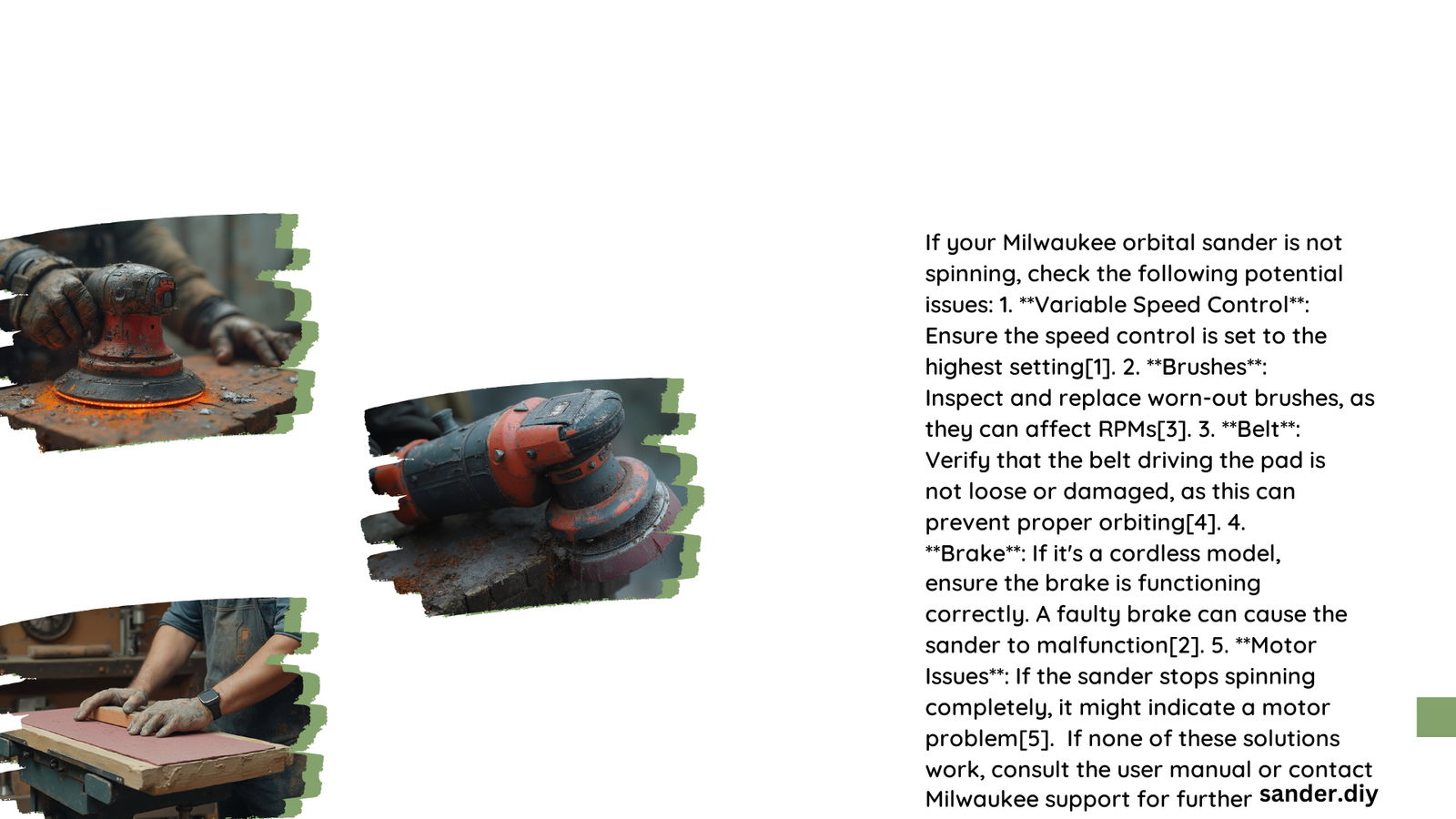When your Milwaukee orbital sander suddenly stops spinning, it can disrupt your woodworking project and cause significant frustration. A non-functioning sander might result from various mechanical or electrical issues, ranging from dust accumulation and worn carbon brushes to complex motor problems. Understanding the root causes and implementing systematic diagnostic procedures can help you quickly restore your tool’s performance and get back to your project.
What Causes Milwaukee Orbital Sander Motor Failure?
Mechanical Obstruction Factors
- Dust and Debris Accumulation
- Prevents smooth motor rotation
- Blocks critical mechanical components
-
Increases internal friction
-
Bearing Degradation
- Reduces rotational smoothness
- Creates excessive resistance
- Leads to potential motor burnout
Electrical System Problems
- Carbon Brush Wear
- Interrupts electrical conductivity
- Causes intermittent motor function
-
Requires periodic replacement
-
Power Supply Issues
- Battery/cord connection problems
- Voltage inconsistencies
- Switch mechanism failures
How to Diagnose Milwaukee Orbital Sander Motor?

Diagnostic Checklist
| Diagnostic Step | Procedure | Expected Outcome |
|---|---|---|
| Visual Inspection | Check external damage | Identify visible issues |
| Dust Cleaning | Use compressed air | Remove internal blockages |
| Electrical Test | Verify power supply | Confirm voltage delivery |
| Mechanical Test | Manually rotate components | Check for smooth movement |
Detailed Troubleshooting Process
Step 1: Safety Preparation
- Unplug the sander
- Remove battery (cordless models)
- Work in well-ventilated area
Step 2: Comprehensive Cleaning
- Use compressed air
- Remove dust from motor housing
- Clean carbon brush compartments
- Inspect for visible debris
Step 3: Carbon Brush Examination
- Remove carbon brushes
- Check for wear and tear
- Measure brush length
- Replace if shorter than manufacturer’s specifications
What Are Advanced Repair Techniques?
Professional Diagnostic Methods
- Multimeter Testing
- Check electrical continuity
- Verify switch functionality
-
Measure resistance across components
-
Bearing Lubrication
- Apply specialized lubricants
- Reduce internal friction
- Restore smooth rotation
Potential Replacement Scenarios
- Carbon brushes
- Motor bearings
- Power switch
- Entire motor assembly
When to Seek Professional Help?
Warning Signs Requiring Expert Intervention
- Persistent motor failure after DIY repairs
- Unusual burning smell
- Visible electrical component damage
- Complex internal mechanical issues
Preventive Maintenance Strategies
Regular Maintenance Checklist
- Clean after each use
- Store in dry environment
- Inspect electrical components quarterly
- Replace consumable parts proactively
- Use manufacturer-recommended accessories
Cost-Effective Solutions
Repair vs. Replacement Analysis
- Minor repairs: $30-$100
- Major motor replacement: $150-$300
- New sander cost: $200-$500
Pro Tip: Always compare repair costs against purchasing a new tool.
Conclusion
Resolving a Milwaukee orbital sander not spinning requires systematic diagnosis, careful troubleshooting, and sometimes professional intervention. By understanding potential failure points and implementing preventive maintenance, you can extend your tool’s lifespan and maintain optimal performance.
Reference:
– Milwaukee Official Support
– Power Tool Repair Guide
– Woodworking Tool Maintenance Forum
